|
28th and 29th March:
In and around Jim’s Garden
This
weekend, with the Lock-down measures in full force, my car was locked
in the garage and my nature-watching was confined to my home grounds. At
the first opportunity, domestic duties completed, I managed some nice
pictures from my bedroom window of birds that had gathered on top of
the hedge. Just why they had gathered there became apparent when the
lovely birdkiller, Kitty, passed through my backyard. House Sparrows
and Starlings watched the cat until it was gone (see also,
“Pictures of
the Week”,below). A younger cat might have tried to catch one
of the
birds, but Kitty knew hunting the birds would be a complete waste of
time as her movements were well watched.
| Kitty |
House
Sparrow |
Female House Sparrow |
Starling |
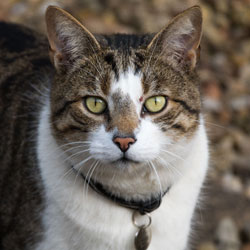 |
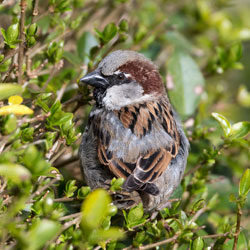 |
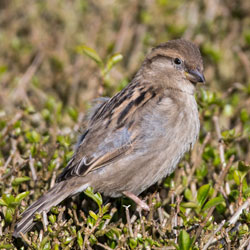 |
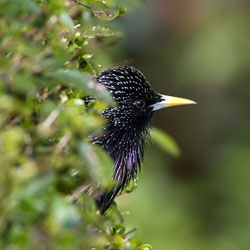 |
Other
birds on higher positions of safety, were a pair of Woodpigeons who,
from the branches of the Ash tree, were more interested in birdy love
than the cat. Higher still, gulls were circling noisily seeking scraps
of food put out for the smaller, more loved birds. I was surprised that
they were Lesser Black-backed Gulls (I’d assumed they were
Herring
Gulls). The roof and chimney stacks were popular with chattering
Jackdaws and coo-ing Feral Pigeons.
| Wood
Pigeon |
Lesser
Black - backed Gull |
Jackdaw |
Feral
Pigeon |
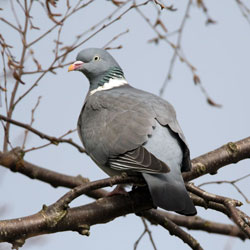 |
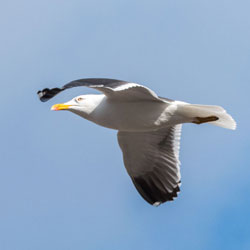 |
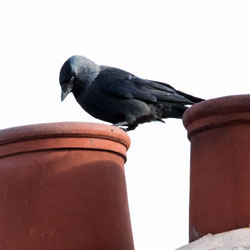 |
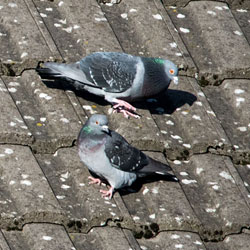 |
In
a shady area under trees I found Opposite-leaved Golden Saxifrage.
Close by there were patches of Dogs’ Mercury. These wild
flowers had
just come into flower, but some weeks before the Coltsfoot had burst
into bloom, even before its leaves had formed. I also noticed Variegated
Periwinkle, a somewhat
invasive garden escapee on an uncultivated area of ground.
| Opposite-leaved
Golden Saxifrage. |
Dog's
Mercury |
Coltsfoot |
Variegated
Periwinkle |
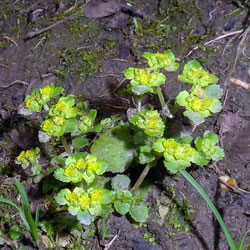 |
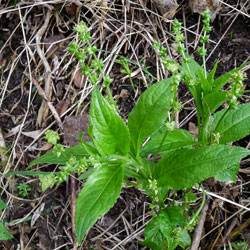 |
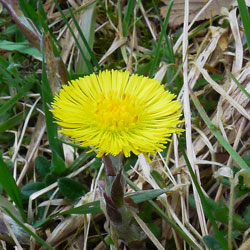 |
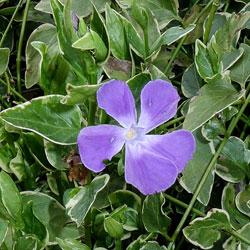 |
I thought it might be a
bit too early in the year for umbilifers , but I came across Sweet
Cicily
just coming into bloom. It’s a forager’s favourite,
having many uses.
Growing on the edges of my car runway was a plant normally considered
to be a garden weed. Leaves of Hairy
Bittercress
are actually edible (after washing, of course), tasting
“spicy-hot,
rather than bitter”. Also lining the runway (to my shame) was
another
so-called “weed”, Common
Whitlowgrass .
Its very pretty, tiny flowers have four white, toothed petals and yellow
anthers. It seems a shame that they are so poorly appreciated.
Certainly a lot more well-thought of flowers are Forget-me-nots. My
neighbour had these, an Alpine variety, below his garden wall. How they
got there I’m not sure since his garden is slabbed over and
flower-less.
| Sweet
Cicely |
Hairy Bittercress |
Common Whitlowgrass
|
Alpine Forget-me-Not |
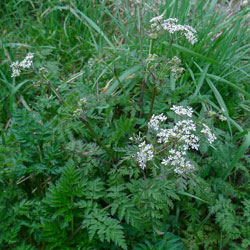 |
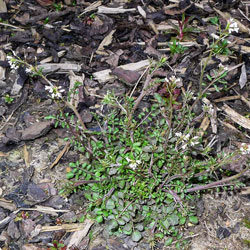 |
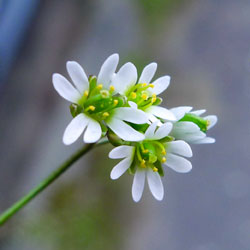
|
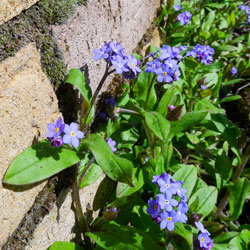 |
I have bird feeders in
my back garden in an attempt to lure some garden
birds .
The usual visitors include the Sparrows and Starlings mentioned above,
but other regular visitors include the Robin, Wren, Dunnock and Magpie.
| Robin |
Wren |
Dunnock |
Magpie |
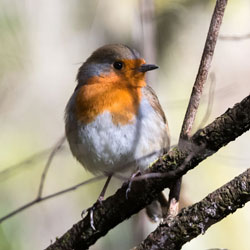 |
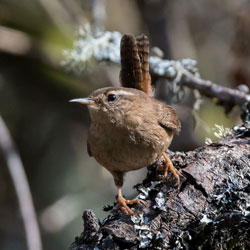 |
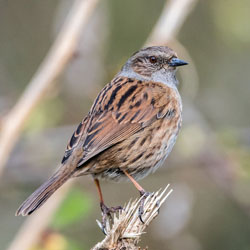 |
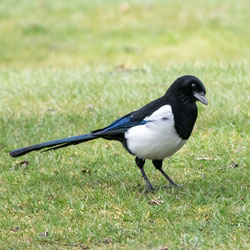 |
Birds
that are usually heard, rather than seen, include the Greenfinch, Great
Tit, Goldfinch and, overhead, passing, the Grey Heron.
| Greenfinch |
Great
Tit |
Goldfinch |
Grey
Heron |
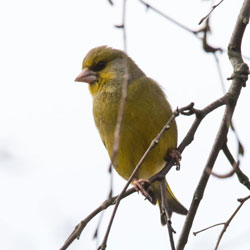 |
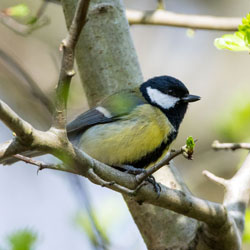 |
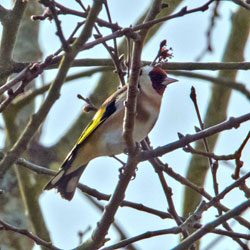 |
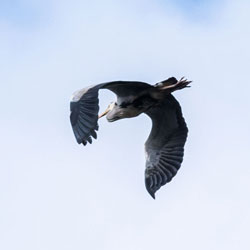 |
Over
the weeks ahead I will continue to photograph the flowers, birds and
invertebrates in and around my home. I do take my daily,
social-distanced walk, and would love to take my cameras, but that
would go against the spirit of the current restrictions. However,
I’m
quite looking forward to studying my immediate environment, and of
course you’ll be the first to see my observations. Stay safe.
Pictures of the Week
| House
Sparrow |
Starling |
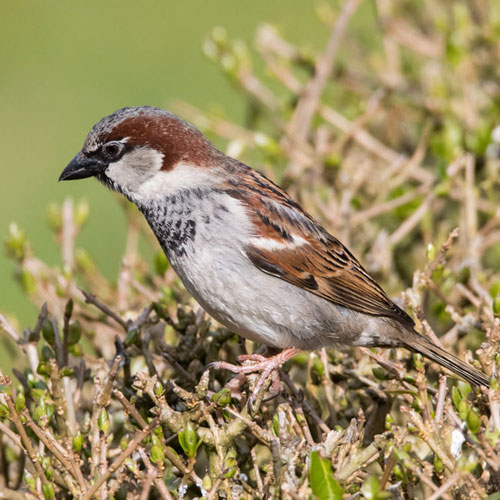 |
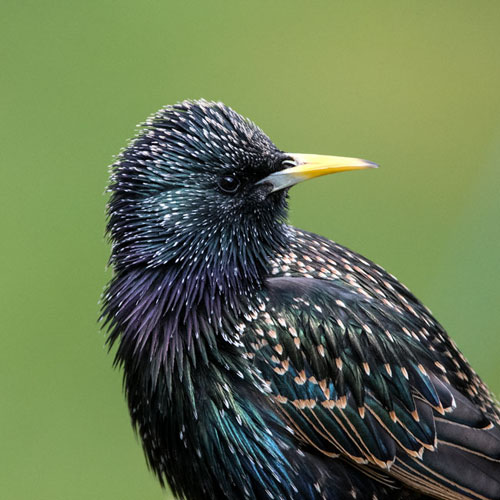 |
| Wood
Pigeon |
Dunnock |
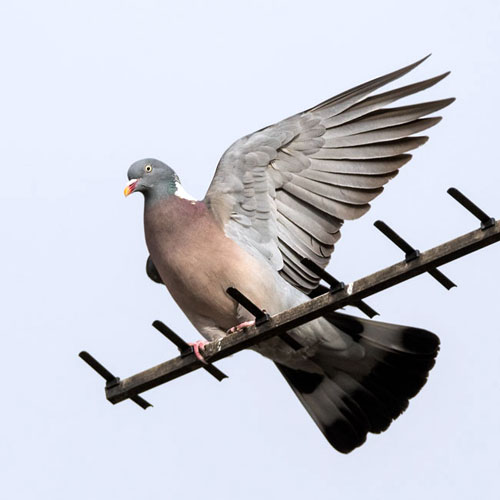 |
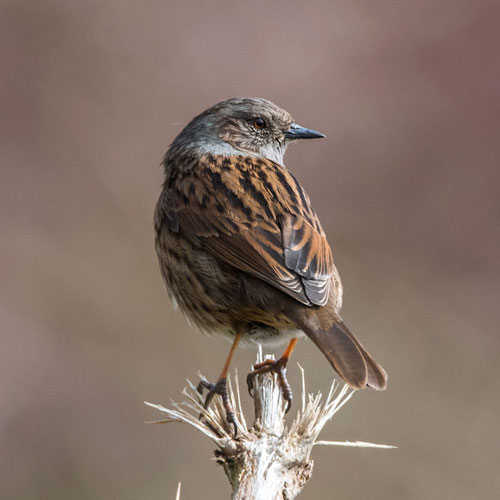 |
| Tree
Bumblebee |
Wren |
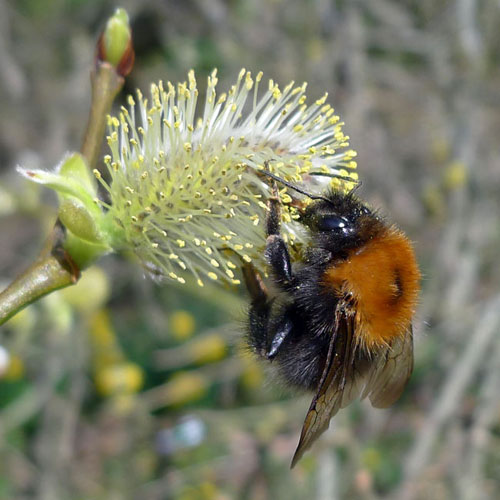 |
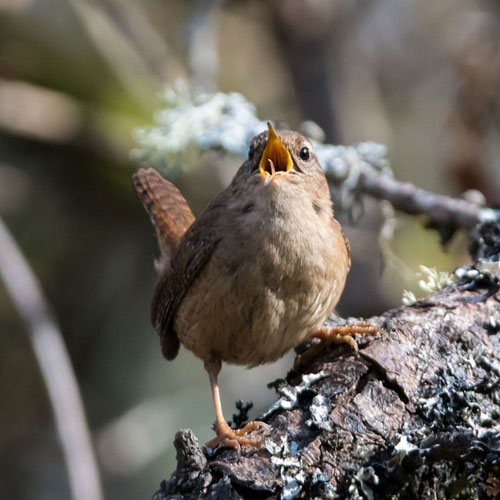 |
22nd
March 2020:
Stevenson
Stevenston Point
This week I managed a
carefully managed social-distanced trip to
Stevenson. The weather was pleasantly sunny but a little cool on the
coast. I started on Stevenson Point with a good clear view of a Curlew
in flight. I then walked along the sands to the south of the Point to
examine the Rabbie
Burns portrait
decorating part of the dunes barrier wall. On my way back I came across
a Linnet feeding on seaweed. A pair of
Carrion Crows loomed overhead, but the feisty Linnet held its ground.
A view of Stevenson
Point, viewed from the south.
Back on the north shore
of the Point I snapped a couple of shots of a
Turnstone and a pair of Redshanks that were sheltering from the stiff
breeze tucked between rocks. I noticed a gathering of birds sitting in
offshore shallows to the north. They seemed to be tolerant of the dog
walkers on the beach, so I decided to go and check them out. I passed a
pair of good-looking Herring Gulls standing by a puddle. Gulls
aren’t popular with most folk, but, their anti-social habits
aside, I think they are good-looking birds, well adapted to their
environments. When I reached the area of beach closest to where the
birds were, the tide had gone out a bit more, resulting in the shallows
becoming a temporary island. A flock of Sanderlings had flown in and were fairly close
to the waters edge.
| Turnstone |
Redshank |
Herring Gull |
Sanderling |
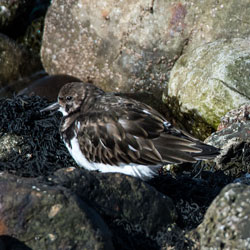 |
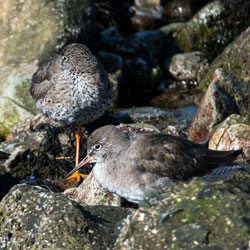 |
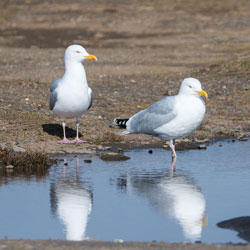 |
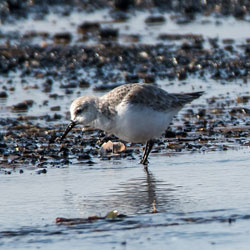 |
That was until a
dog-walker started throwing his dog’s ball into
the channel. The Sanderling moved to settle at the far side of the
“island”.
At the same location I
also saw some Common Gulls, a Bar-tailed
Godwit and
a large number of Oystercatchers. It’s a pity that the light
was
from behind the birds as they were partially silhouetted. As I made my
way back to the car I photographed a Meadow Pipit when it landed on a
small bush.
| Common Gull |
Bar-tailed Godwit |
Oystercatcher |
Meadow Pipit |
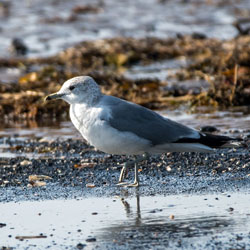 |
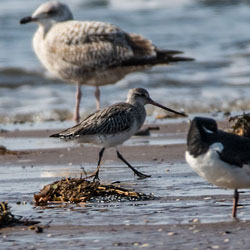 |
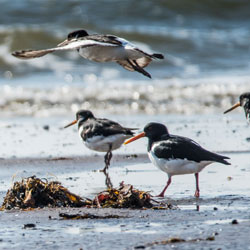 |
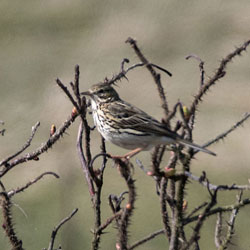 |
I decided that my next
site was Ardeer
Quarry Local Nature Reserve
(The LNR is an ongoing project of Garnock
Valley Futurescapes).
I was pleased to see that there were no cars in the car park and very
few people about. I noticed a beautiful Daffodil near the car, just
before the steps to the Pond. On the water, a well-lit Moorhen emerged
from the reed bed, while on the grassy banks an adult Mute Swan was
nibbling grass. Its well-grown cygnets were not too far away in
slightly longer grass.
| Daffodil |
Moorhen |
Mute Swan |
Juvenile Mute Swans |
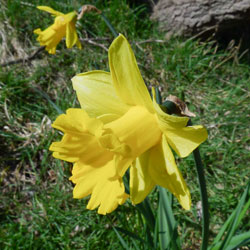 |
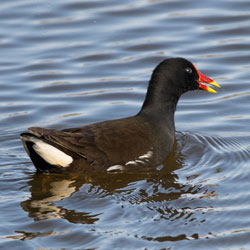 |
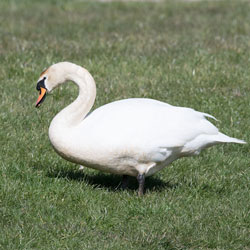 |
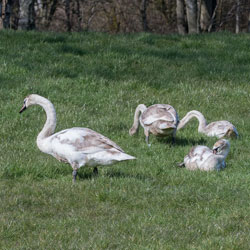 |
Throughout the reserve, Willow
trees were showing very attractive white and yellow catkins on
which were many small birds, such as Blue Tits and Great Tits. I was
very pleased to, first hear, then see, my first Chiffchaff of the year (also see,
“Pictures of the Week”, below).
| Willow Catkin |
Blue Tit |
Great Tit |
Chiffchaff |
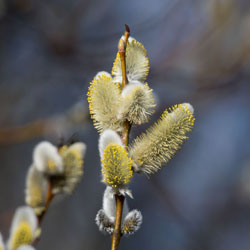 |
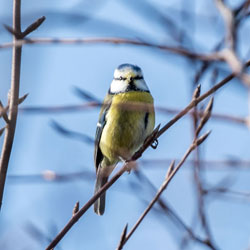 |
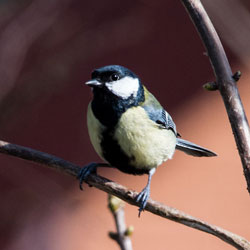 |
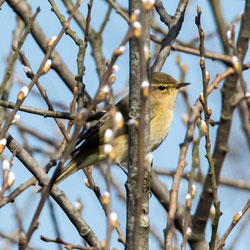 |
While strolling in the
sun along the path on east side of the reserve,
I was serenaded by a shady Robin sitting on a Bramble branch.
Less-pleasing was the sight of a very large Buff-tailed Bumblebee on the
ground, obviously in some discomfort. Eventually it flew off, but when I
examined some of the shots I took, I noticed what looked like parasitic
mites clinging to its sides. I was on the lookout for wildflowers, but
it was still early in the year. I did find some Hairy
Bittercress
though, considered as a weed by many, but to a few it is a salad
food .
| Robin |
Queen Buff- |
tailed Bumble Bee |
Hairy Bittercress |
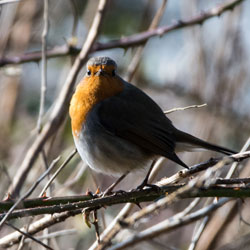 |
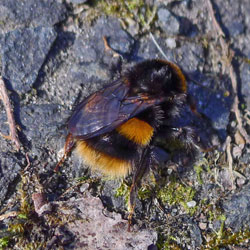 |
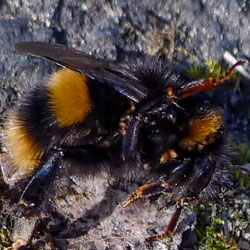 |
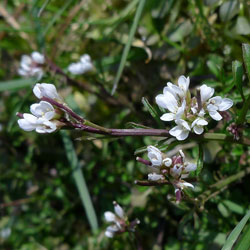 |
From the west side of
the LNR I almost missed a big sighting when I
stooped to capture a picture of a lovely yellow Lesser Celandine. From
the corner of my eye I saw a
Roe Buck
moving through the long grass (see, “Pictures of the
Week”,
below). It was the first I’d seen since a big cull some years
ago.
As I passed the pond, on my way back to the car, I got nice shots of a
Tufted Duck and also of a lovely Common Daisy.
| Male Roe Deer |
Lesser Celandine |
Tufted Duck |
Common Daisy |
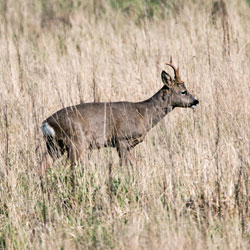 |
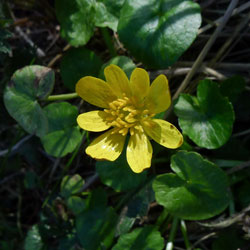 |
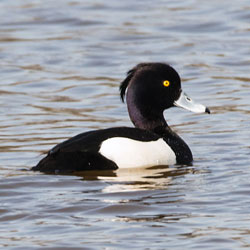 |
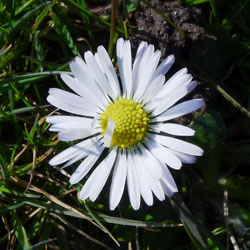 |
My final location was
Auchenharvie Loch which is found in the grounds of Auchenharvie golf
course. A ruined
castle
overlooks the loch, hinting at the history of the area. I took a quick
shot of a wee Coot and a Canada Goose which were in the middle of the
loch, just as a man with bread turned up and attracted some gulls over
to get their pictures taken. A bold Herring Gull and an energetic
Lesser Black-backed Gull (see, “Pictures of the
Week”,
below) put on an impressive show of aerial acrobatics as they competed
for slices of Mother’s Pride. A wee Black-headed Gull
didn’t stand a chance and left empty-bellied.
| Coot |
Canada Goose |
Herring Gull |
Black-headed Gull |
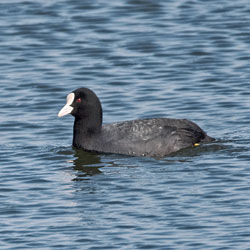 |
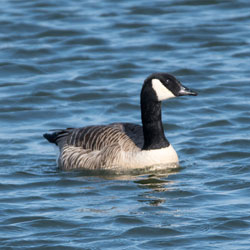 |
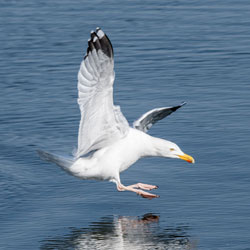 |
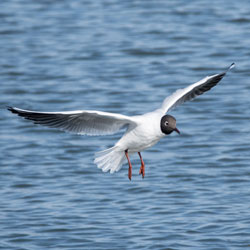 |
A Grey Heron, which
I’d not seen previously, made a dash for safety when I got
too close. My final shot was of the Lesser
Black-backed Gull ,
its charcoal wings and yellow legs (its main identification features)
were very prominent in the bright sunlight.
| Grey Heron |
Lesser Black-backed Gull |
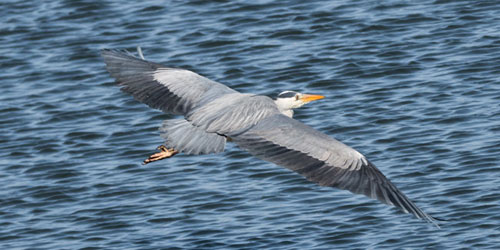 |
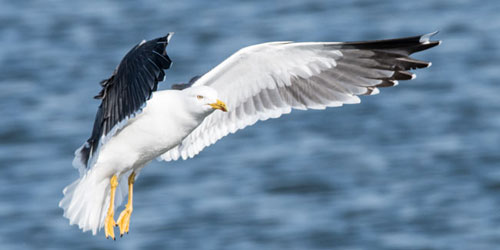 |
Social distancing made
it a lonely visit to Stevenston. However, it was
satisfying that I saw some nice things - the Chiffchaff, Sanderlings and
Roe Deer being my highlights. I had a quick cup of tea and a biscuit
before returning home. Lock Down may curtail future visits, but
I’ll take a camera on any spells of exercise and who know, I
might get a blog or two from those walks.
Pictures of the Week:
| Chiffchaff |
Great Tit |
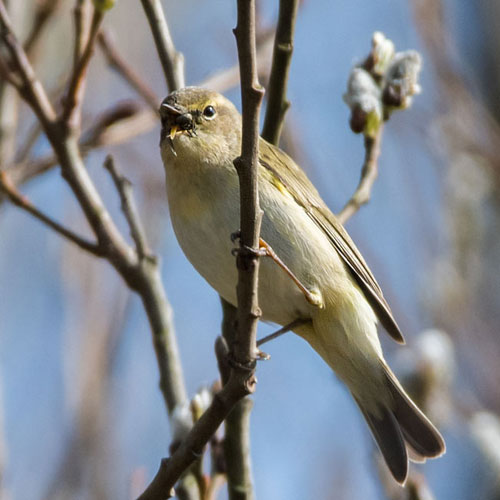 |
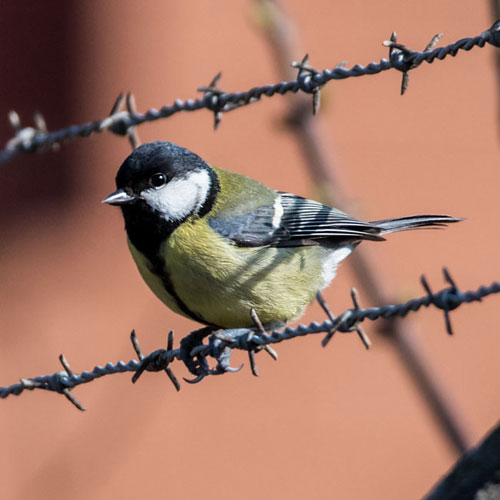 |
| Male Roe Deer |
Lesser Black-backed Gull |
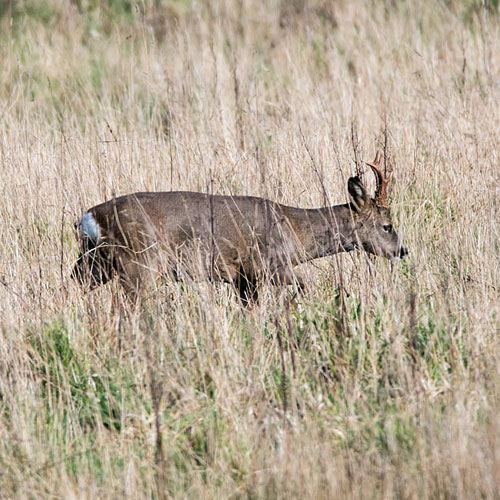 |
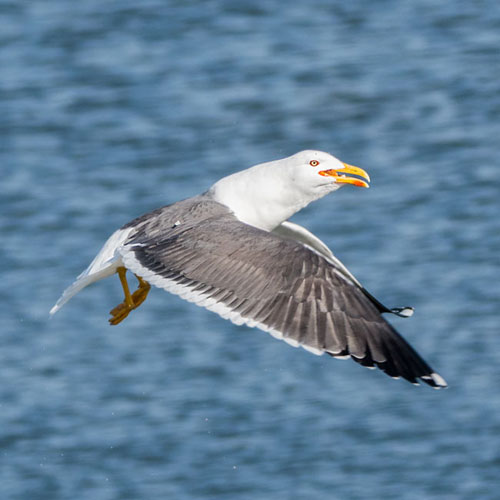 |
15th
March 2020:
Stevenston, Saltcoats, Troon and Irvine Harbour
For once I decided not
to head for the area of best weather prediction
(which would’ve been the eastern Central Belt) but instead,
simply because I’d not been there for a couple of months, I
headed for the Ayrshire Coast between Saltcoats and Troon.
I was on my own since
John was busy with family duties, so I skipped
breakfast and had a quick cuppa on Stevenston Point. As you can see
from the picture below, there was a very strong south-westerly wind
driving the waves to shore. It was also driving birds into more
sheltered areas.
It seemed that the only
birds brave enough to take on the wild wind
were the Herring Gulls and Oystercatchers (also see,
“Pictures of the Week”, below). The only other bird
I saw
was a Curlew on the sands south of the Point.
| Herring Gull |
1st Cycle Herring Gull |
Oystercatcher |
Curlew |
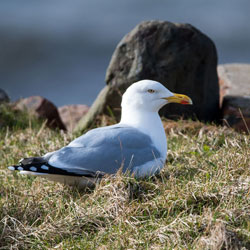 |
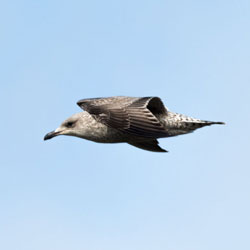 |
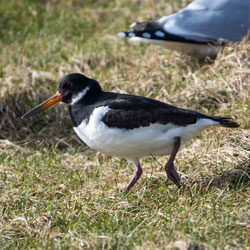 |
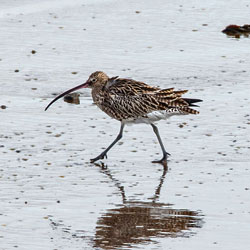 |
I decided to checkout
Saltcoats Harbour, as it is a more sheltered area.
From the harbour, a pair
of Eider were the only birds on the water. A
Cormorant passed overhead but there were no other birds to be seen. A
walk beside the sea wall on Windmill Street produced sightings of a few
Oystercatchers probing the sands for invertebrates and Starlings on
seaweed.
| Eider |
Cormorant |
Oystercatcher |
Starling |
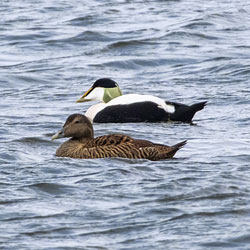 |
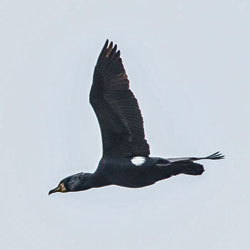 |
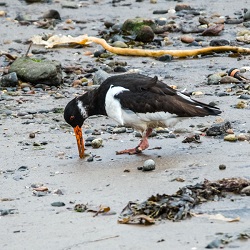 |
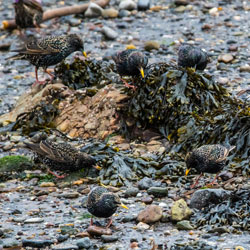 |
I also snapped a nice
Curlew and a wading Redshank. On a large rock I
noticed three Herring Gulls, two adults and one first winter.
| Curlew |
Redshank |
Herring Gull |
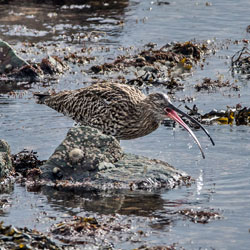 |
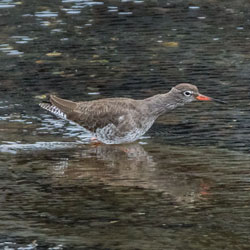 |
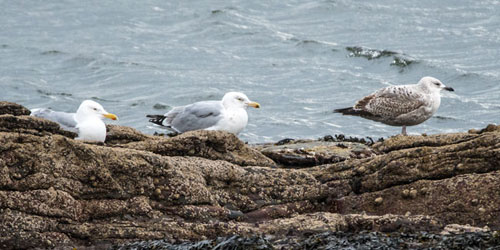 |
A bit disappointed at
the lack of birds at my first two locations, I
drove the short distance down the A78 to Troon Harbour, but it too drew
a blank. I next moved to the Titchwell Road car park hoping for a
change in fortunes. Just as I arrived a huge flock of Knot swept in and landed on the rocky shore a
mere 100m north of where I was parked.
I walked along the sea
wall and sat and waited for the flock to get
nearer. The birds were walking over the shore, the flock moving like a
feathery quilt over the rocks. Soon I managed a good few shots from a
fairly close range (chosen by the birds, I hasten to add)
(see
also, “Pictures of the Week”, below). A few Dunlin were in the flock. It’s
interesting to compare the difference in size of the two waders. I also
noticed a single Ringed
Plover amid the invasion
of Knots. It didn’t look confident as the invasion spread
closer.
| Knot...... |
|
Dunlin |
Ringed Plover |
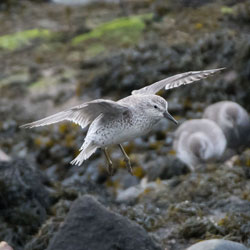 |
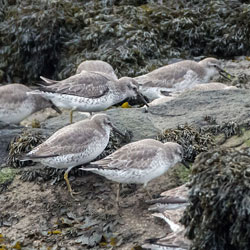 |
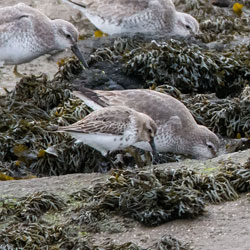 |
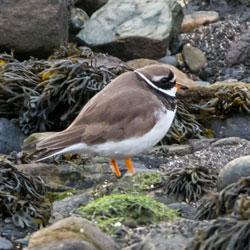 |
I needed a toilet break,
so I walked towards the Town Hall where I knew
there were Public Toilets. On the way I came across a sheltered area of
rocky shore where a single Purple
Sandpiper and a Turnstone were
searching for food (see also, “Pictures of the
Week”,
below). There were also the usual Crows and Starlings there too.
| Purple Sandpiper |
Turnstone |
Carrion Crow |
Starling |
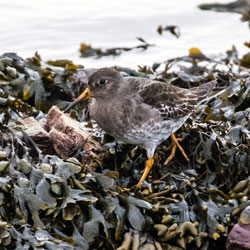 |
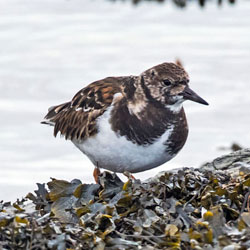 |
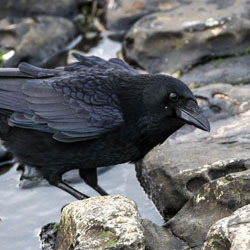 |
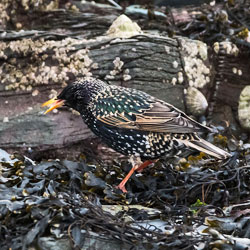 |
Satisfied that the day
had taken a turn for the better, I headed for my
last stop, Irvine Harbour. I walked along the Esplanade scanning for
anything of interest. A few Mute Swans were interested in me, hoping
for bread. I saw a drake Goldeneye near the far bank of the River
Irvine, and beyond it on the banks, some Wigeon were nibbling the
grass. A flock of Starlings was coming and going, failing to settle for
any length of time.
| Mute Swan |
Goldeneye |
Wigeon |
Starling |
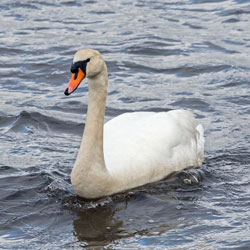 |
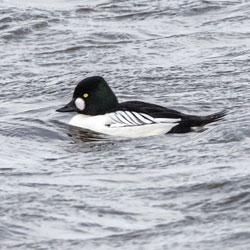 |
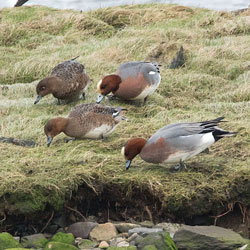 |
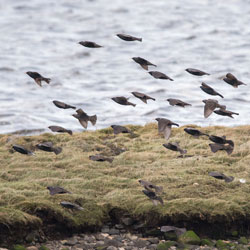 |
Below is a view of the
Bridge of Scottish Invention over the River Irvine.
I walked past the bridge
and photographed a passing Oystercatcher, and
below it, a Blackheaded Gull showing its breeding plumage almost fully
formed. It’s head is actually dark brown, not black. After I
had
captured those images, at my feet, at the edge of the walkway I noticed
what I think were flowers of Danish
Scurvygrass just
emerging from their buds. I took my penultimate shots of the day, a
foraging Jackdaw, near the pilot’s building. I returned to
the
car and just as I was opening the door a Magpie posed on the promenade
railings (see, “Pictures of the Week”, below)
| Oystercatcher |
Black-headed Gull |
Danish Scurvygrass |
Jackdaw |
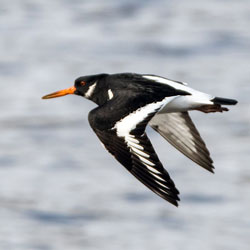 |
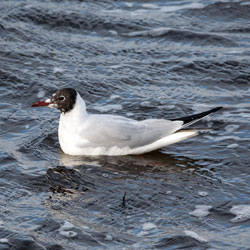 |
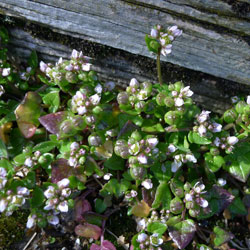 |
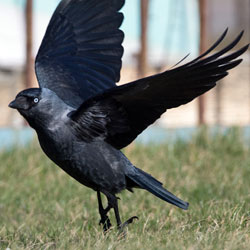 |
After a slow start I
managed to accumulate a pleasing number of
sightings, the highlight being the Knot flock. I rounded off the day with
a cup of tea and a Kit-kat (bought to get change for entry to the loo).
My only regret was the lack of good light, but at least the rain stayed
away. Maybe next week we’ll get a dry, sunny, calm day.
Pictures of the Week
| Herring Gull |
Knot |
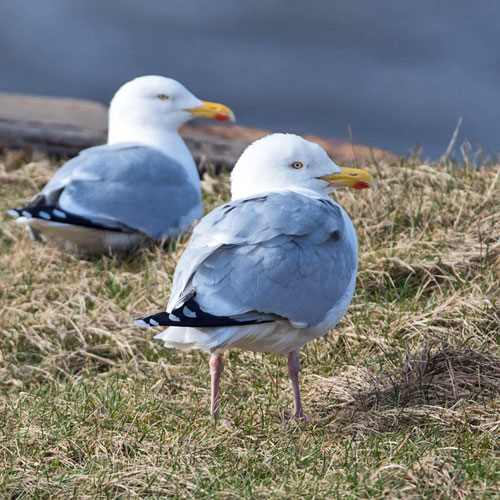 |
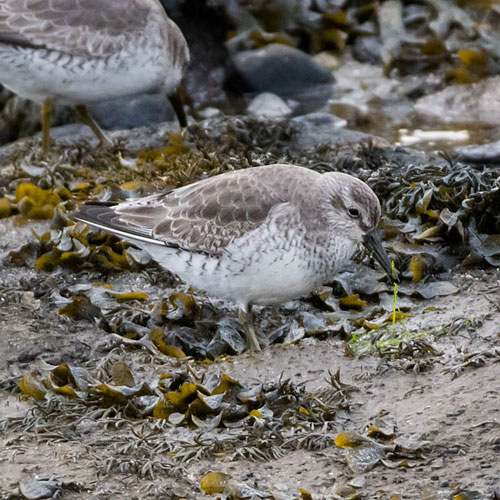 |
| Purple Sandpiper |
Magpie |
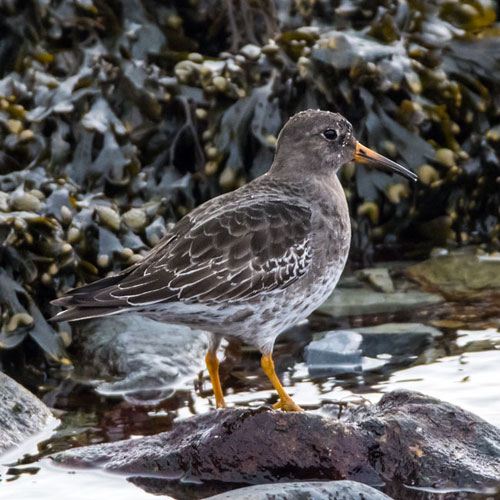 |
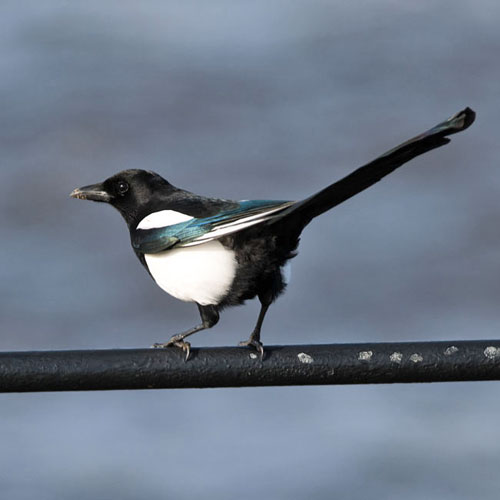 |
8th
March 2020:
Musselburgh
No storms this week,
just the usual clouds, wind and threat of rain.
After reviewing my weather app, it was apparent that east was best, so
we decided a day at Musselburgh might be rewarding. There had been
reports of Long-tailed Ducks, Black-throated and Red-throated Grebes,
not to mention the White-winged and Surf Scoters that had been around
for weeks.
After our Dalkeith
Morrisons’ breakfasts (9.5/10: VG) we parked
on Goosegreen Place near the Cadet Hall and started our walk to the
Scrapes with a quick scan of the mouth of the river Esk. A lone
Cormorant was perched on the river wall. It was facing into a cold,
brisk westerly wind, but at least it was dry. The tide was well in and
there were many Turnstones foraging on the, by now, narrow sandy banks,
along with a couple of Carrion Crows. As we moved past the Hall, John
noticed that the Common
Daisies were in
bloom.
| Cormorant |
Turnstones |
Carrion Crow |
Common Daisy |
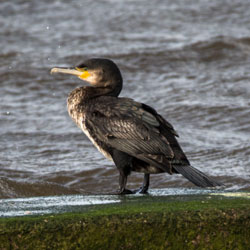 |
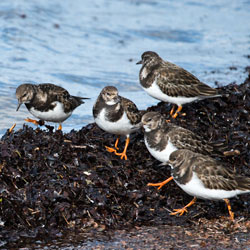 |
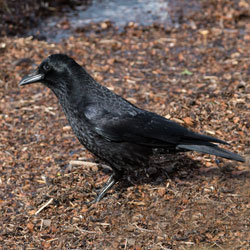 |
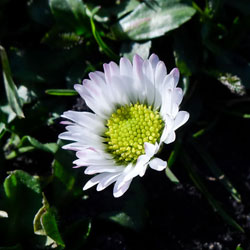 |
There were a lot of Goldeneye activity on and over the water. The drakes
were frisky but the females were playing hard to get.
On the sea wall we came
across another pair of Carrion Crows fighting over a dead Shore
Crab
(see also,“Pictures of the Week“, below). John
thought it
might not be a recent kill as the Crab looked scrappy. From the sea
wall at the Scrapes we saw Velvet
Scoters as they
dived for food. A single, good-looking Long-tailed
Duck was also
diving for food. From high overhead we could hear a very familiar sound
of Spring, a
Skylark. I watched it as
it ascended and then descended, whistling madly.
| Carrion Crow |
Velvet Scoter |
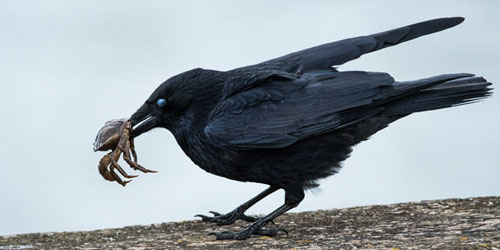 |
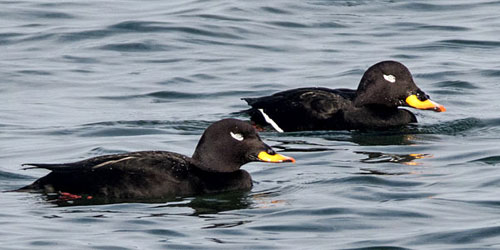 |
| Long-tailed Duck |
Skylark |
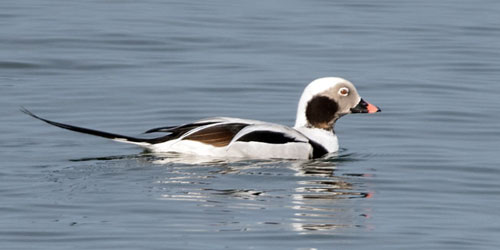 |
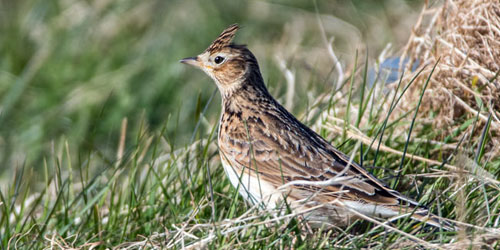 |
We reached the Levenhall
Links
bird reserve, otherwise known as “the Scrapes”. In
the
trees lining the path into the hides, I snapped a Blue Tit before it
flew off. On settling in the middle hide I noticed a flowering Hairy
Bittercress
growing in the cracks of the hide wall. In the middle of the nearest
scrape, a pair of Shelducks
(see,“Pictures of the Week“, below) were
dabbling
cautiously, while around the edges several Teal were feeding.
| Blue Tit |
Hairy Bittercress |
Shelduck |
Teal |
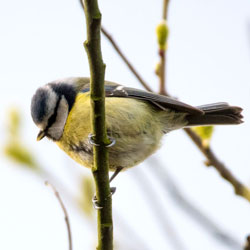 |
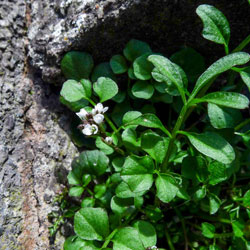 |
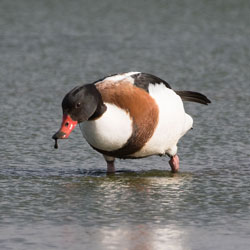 |
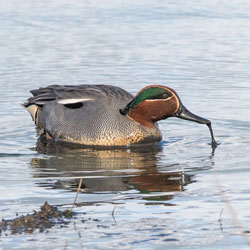 |
In the central grassy
area of the reserve there were many Curlews,
Oystercatchers and Woodpigeons, either eating or sleeping. On the grass
in front of the hide, there was a large Magpie probing for food whilst
keeping a careful eye on the clicking cameras.
| Curlew |
Oystercatcher |
Wood Pigeon |
Magpie |
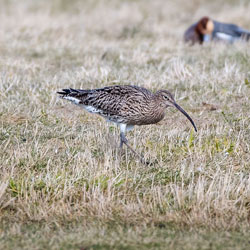 |
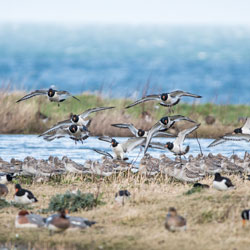 |
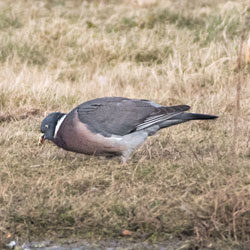 |
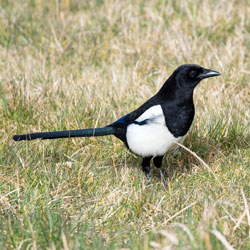 |
A trio of Redshanks flew
in to join the Teal at the water’s edge.
I noticed a pair of cute drake Wigeon were squabbling at the far edge
of a scrape. We decided to set off on return journey to the car. Just as
we reached the sea wall, a huge flock of birds swept out of the reserve
and flew over our heads and out into the Firth of Forth. There
were some Wigeon but the vast majority of the birds were Bar-tailed
Godwits. Another birder mentioned that he’d seen a few
Black-tailed Godwits on the site, but we didn’t see them.
| Redshank |
Wigeon |
Wigeon |
Bar-tailed Godwit |
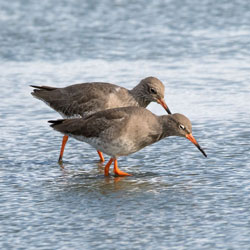 |
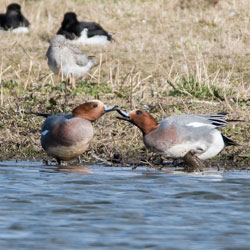 |
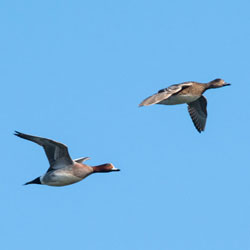 |
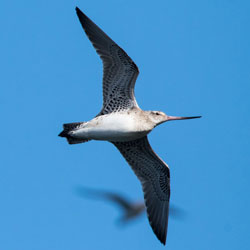 |
There was no sign of the
Grebes but I did get some nice close shots of
courting Eider (see,“Pictures of the Week“, below).
I also
photographed a passing first year Common Gull and an Oystercatcher in
flight.
Eventually we reached
the car. We decided to relocate to the Millhill
riverside parking area for a quick scan before tea and Danish pastries.
The scan was quite productive as the Goldeneye were very active and
John spotted a Grey
Wagtail
exploring the brickwork on the opposite bank just below a row of
roosting Redshanks. I was gathering together our tea stuff when I heard
the high-pitched call of a Treecreeper
(see,“Pictures of the Week“, below). After a quick
visual
search of the surrounding trees I spotted it creeping up one of the
riverside trees.
| Goldeneye |
Grey Wagtail |
Redshank |
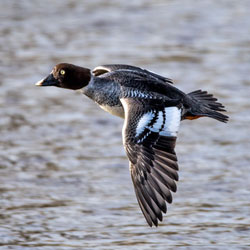 |
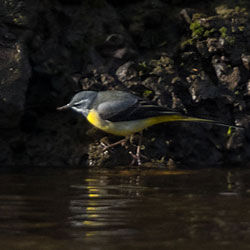 |
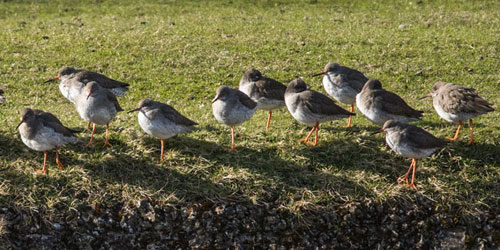 |
So by the side of the
lovely River Esk we munched on custard and almond
Danish pastries washed down with cups of strong tea. We’ve
always
maintained that Musselburgh never lets us down, and it was no different
on Sunday. We saw a great range of birds, my favourite sighting being
the Crow with Crab. The rain held off until we were leaving, and the sun
was out for lengthy periods. All-in-all it had been a great day out.
Pictures of the Week
1st March 2020:
Skateraw and Dunbar
Harbour
Storm
Jorge
was our main weather concern in planning this week’s journey.
My
weather app weather maps showed conditions on Sunday morning were not
encouraging, however, as the prediction below shows, the weather
prospects for Dunbar looked good: sunny intervals with a low risk of
rain in the afternoon, but very windy.
We decided to head for Skateraw,
a few miles east of Dunbar. There had been reports of a Bean Goose with
Pink-footed Geese there, so we were happy to set off on an actual wild
goose chase. We had breakfasts at Dalkeith Morrisons (8/10: tepid food
and shoogly table) before driving down the A1 to Skateraw. The weather
was dry, very windy with a shy sun breaking through the clouds. We
started our quest with a quick search of the fields around Skateraw but
there were no geese. We began a walk along the shoreline at the old
limekiln .
The stormy wind made it difficult to hold my camera steady but I managed
to snap some courting Mallards and also a pair of Oystercatchers. A
Redshank was feeding there too, and was soon joined by a small group of
Ringed
Plovers
| Mallard |
Oystercatcher |
Redshank |
Ringed Plover |
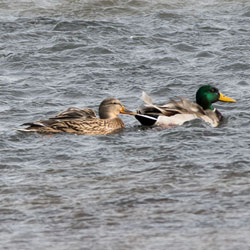 |
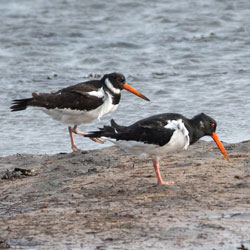 |
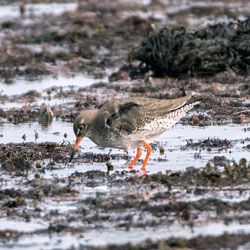 |
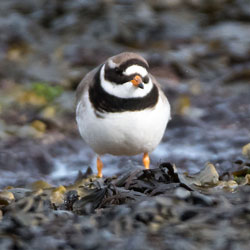 |
.
Around thirty Curlew
emerged from Chapel Point and flew over us heading for fields to the
south. As we moved west towards the beach, a Mallard took off chasing a
female. At the edges of the beach I spotted a Rock
Pipit with a
curious blue mark on its wing feathers, most probably blue paint.
We trekked over to
Chapel Point where we were impressed by the view of
the Barns Ness lighthouse. A male Cormorant in breeding plumage flew low
over the spray of wind-whipped waves. We unfortunately put up a couple
of Shelducks that were lurking around the rock
pools.
| Barns Ness Lighthouse |
Cormorant |
Shelduck |
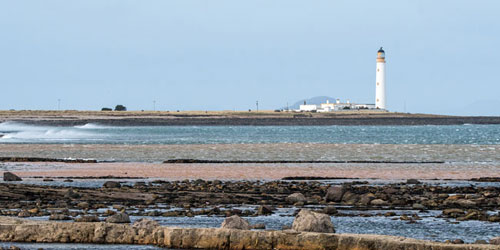 |
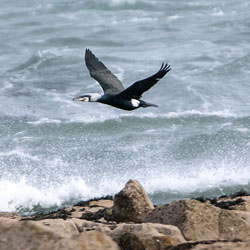 |
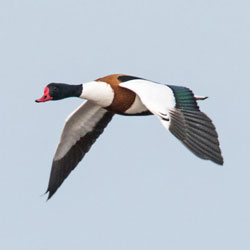 |
The tide was very low
with vast areas of exposed rocks, upon which we noticed a foraging Stoat.
It spotted us first but was reluctant to dive for cover. This allowed me
to get some nice pictures of the wee cutie (see also,
“Pictures
of the Week”, below).
As we sat watching the
Stoat, John noticed a drake Wigeon over a large
rock pool. I got a quick picture of as it flew off. We came across a
sandy area within the rocky expanse, where we found a pair of Bar-tailed
Godwits
with some Ringed Plovers (see also, “Pictures of the
Week”,
below). We parked ourselves on our 3-legged stools and watched the
birds as they foraged. After a short time a pair of
Dunlin flew in
and began searching the wet sands for nibbles.
| Wigeon |
Bar-tailed Godwit |
Ringed Plover |
Dunlin |
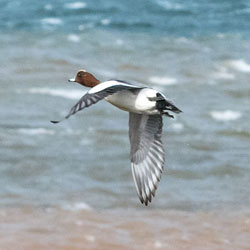 |
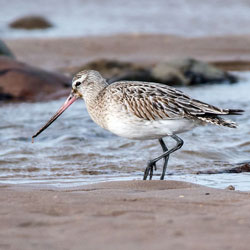 |
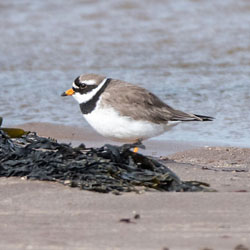 |
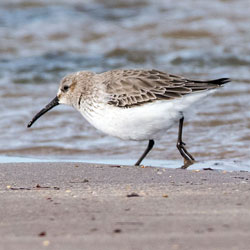 |
The wind was getting
very strong, so strong that we were almost blown
off our feet. Taking photographs was very tricky but I did get fairly
good shots of a Rock Pipit nestled in a pile of seaweed. John directed
my attention to a group of Eiders sheltering on a finger of rock close
to the water’s edge. Soon we reached the Dry Burn. It was
anything but dry, since huge torrents of opaque brown water raged down
its narrow channel and out into the Firth of Forth. I decided to cross
the bridge to scramble up the steep slope to see if the Pink-feet or
Bean Goose were in the fields beyond the boundary wall. ( I decided to
wait at the bottom rather than risk a new hip! JP)
I discovered a Fairy Ring Champignon (also
known as a Scotch
Bonnet) on the grassy hillside.
| Rock Pipit |
Eider |
Curlew |
Fairy Ring Champignon |
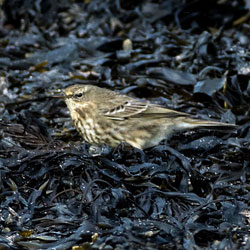 |
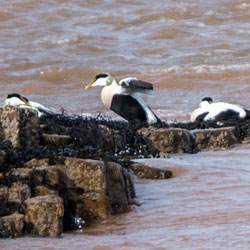 |
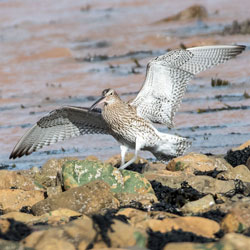 |
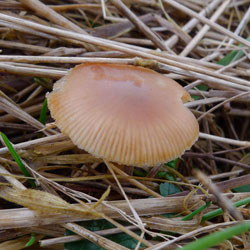
|
At the boundary wall I
cautiously looked over. Were there Geese? No. Was it a wasted climb?
No, there were four Roe
Deer sitting in
the middle of the field, a buck with three does.
After an exhilarating
battle against the wind, we arrived back at the
car. I decided to drive to the shelter of Dunbar Harbour for a final few
shots before tea. We were pleased to see a few Great Black-backed Gulls
on the water, 3rd year, 1st year and adult, and of course, Herring
Gulls (see also, “Pictures of the Week”, below).
| Great Black-backed Gull 3rd Cycle |
Great Black-backed Gull |
Great Black-backed Gull 1stCycle |
Herring Gull |
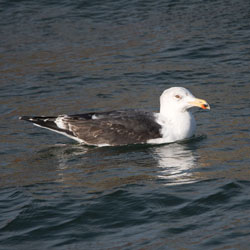 |
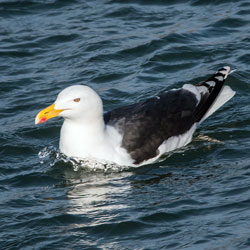 |
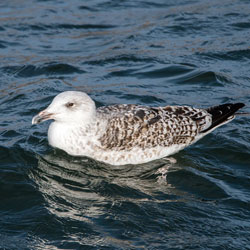 |
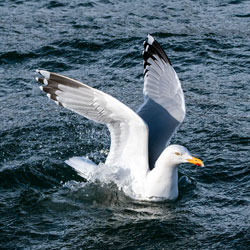 |
A small flock of Eider
were also swimming on the harbour water,
occasionally diving for food (see also, “Pictures of the
Week”, below). The drakes were courting the females by
raising
their heads while calling “a-whoo”. Just as we were
about
to unscrew the vacuum flask and break open the
Danish pastries, John
spotted a small Shag at the harbour mouth. My
final picture taken was of a very pretty Crocus, Ruby Giant, that was on
a patch of grass close to the car.
| Eider...... |
|
Shag |
Ruby Giant Crocus |
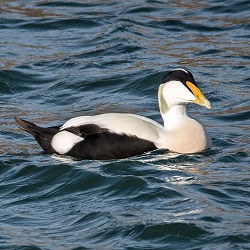 |
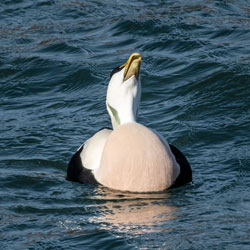 |
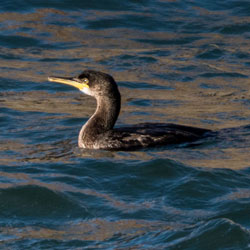 |
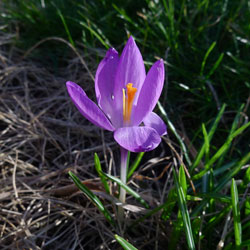 |
Our teas and pastries
were, as usual, very enjoyable. We didn’t
manage to see the Bean Goose, or any Goose come to that, but the bonny
wee Stoat and Roe Deers certainly made up that disappointment. Storm
Jorge was certainly the liveliest storm so far this winter, but it was
more invigorating than scary. But let’s not have any more
storms.
We’re now into meteorological Spring so we’ll be
looking
for more flowers and invertebrates from now on. Can’t wait.
Pictures of the Week
| Stoat |
Ringed Plover |
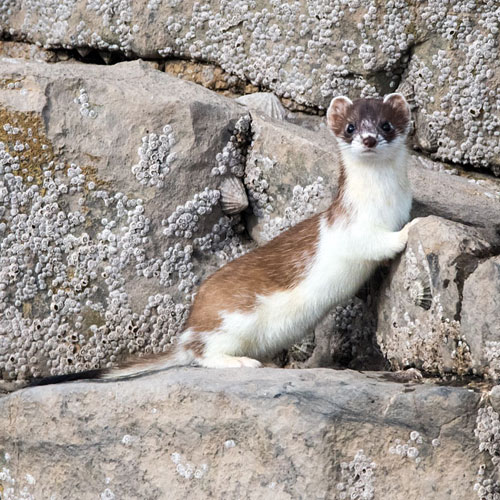 |
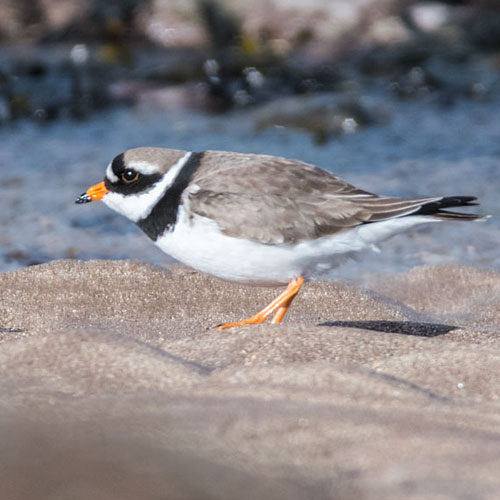 |
| Herring Gull |
Eider |
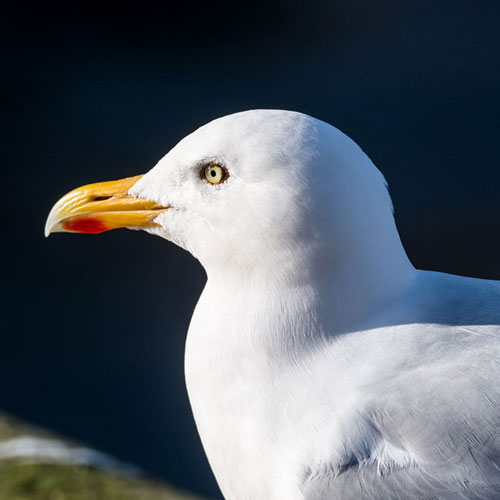 |
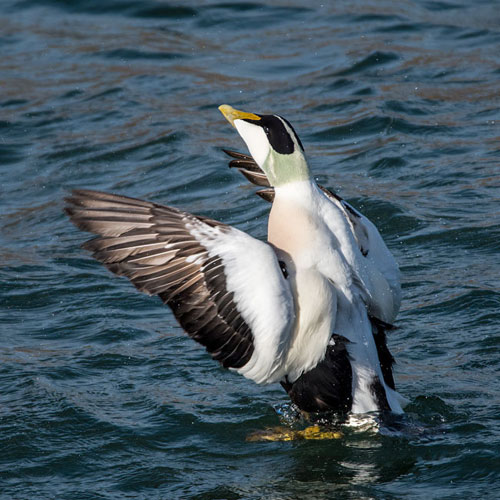 |
Highlights -
March 2020
We
present last month’s gallery of my favourite pictures taken
during
March 2020. They are not listed in the order they have been taken, but
according to a series of themes. They’ve all been taken
before the
COVID19 Lockdown.
LITTLE BIRDS
| Blue
Tit |
Bullfinch |
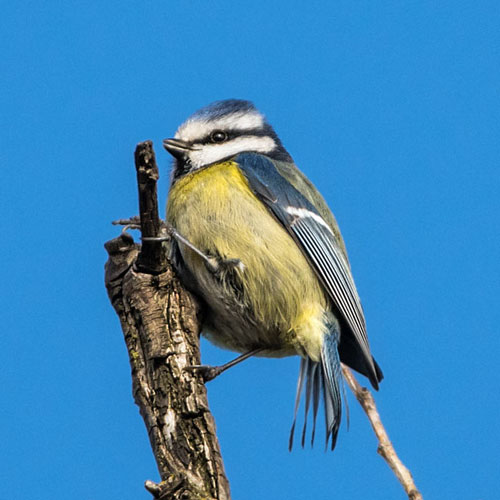 |
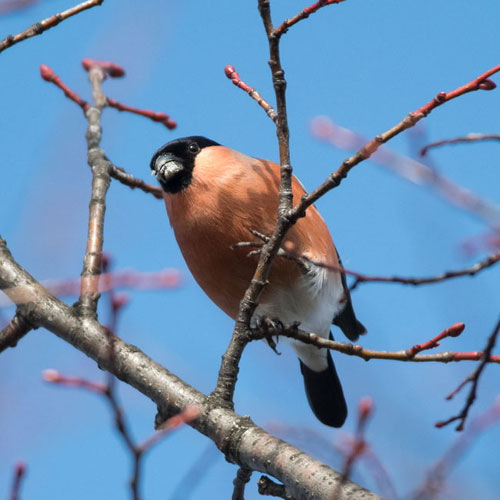 |
| Female
Chaffinch |
Chaffinch |
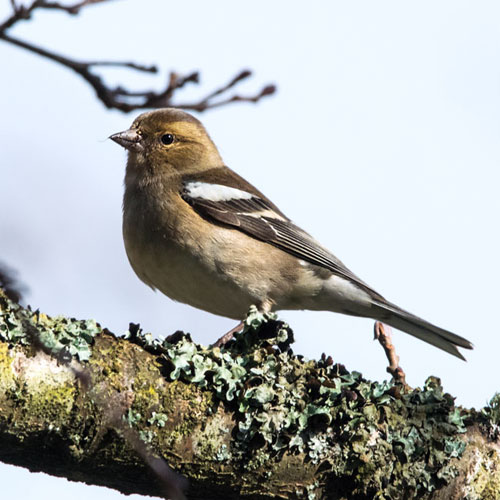 |
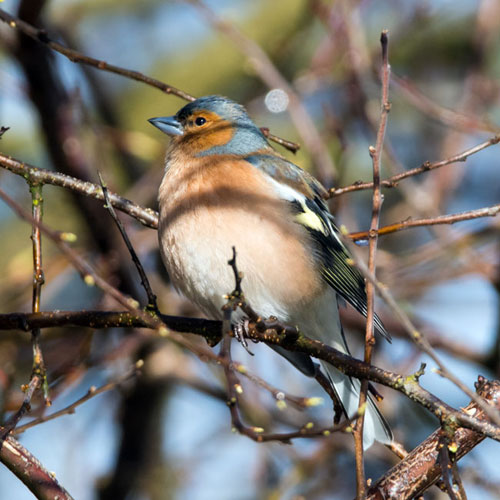 |
| Dunnock |
Goldcrest |
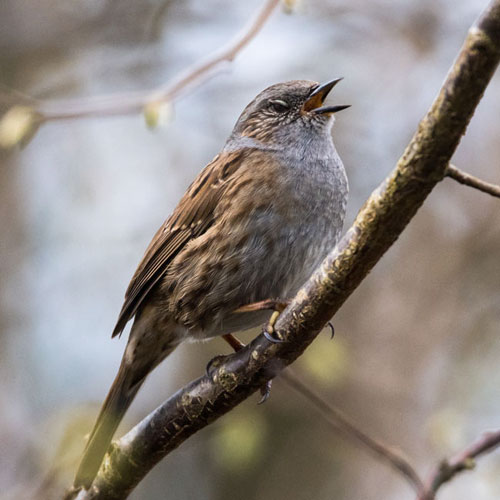 |
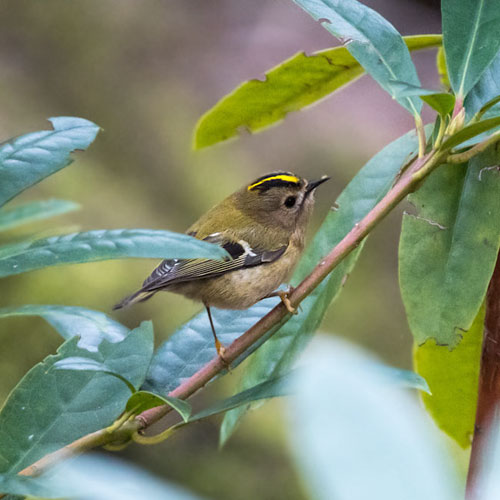 |
| Robin |
Wren |
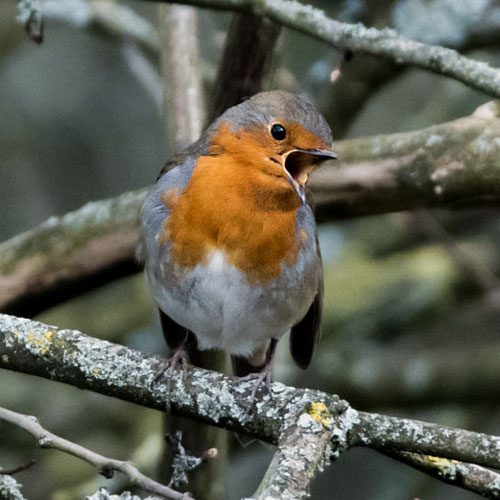 |
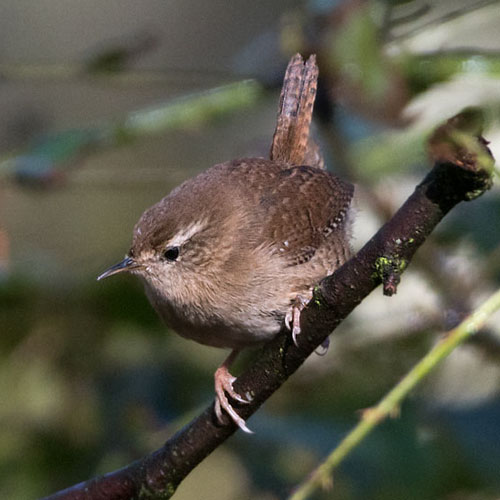 |
FIRST FLOWERS OF
SPRING
| Barren
Strawberry |
Coltsfoot |
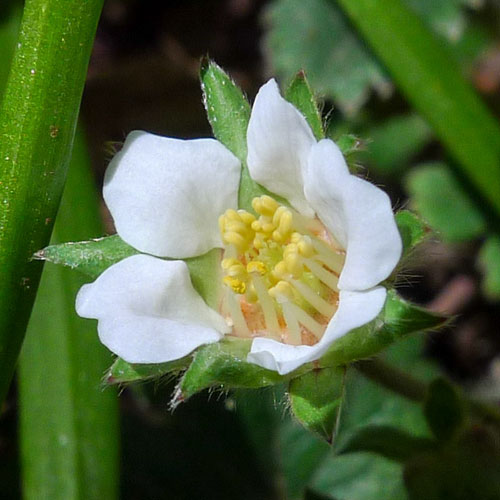 |
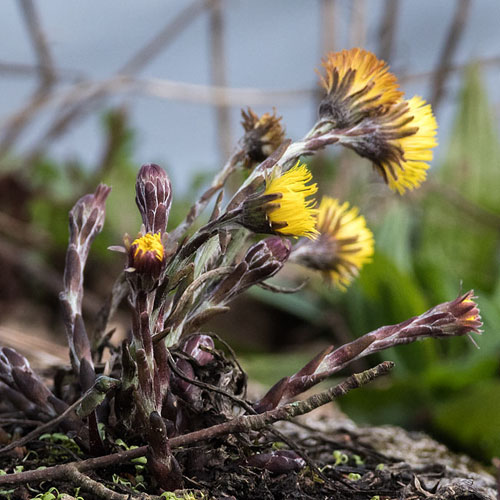 |
| Crocus |
Daffodil |
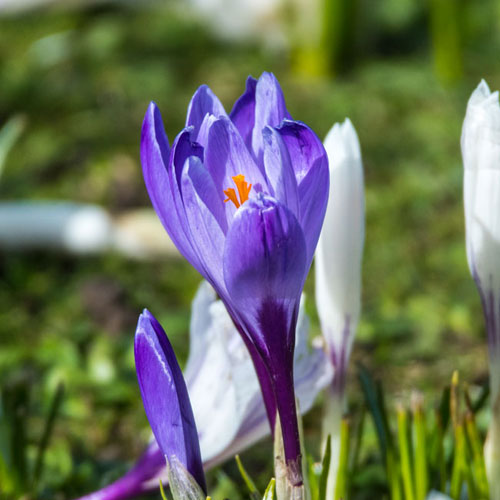 |
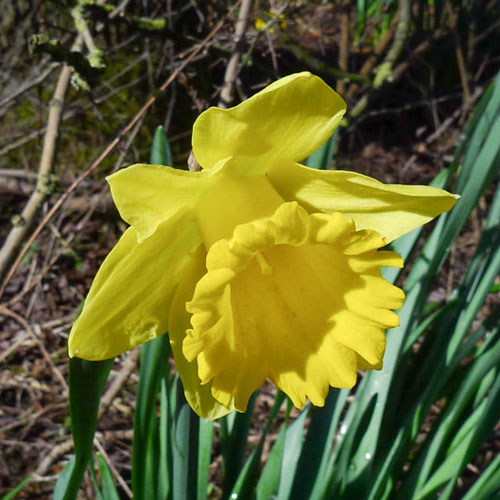 |
| Few-flowered
Leek |
Lesser
Celandine |
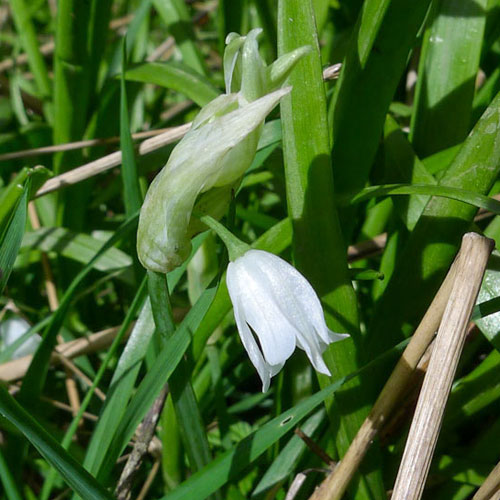 |
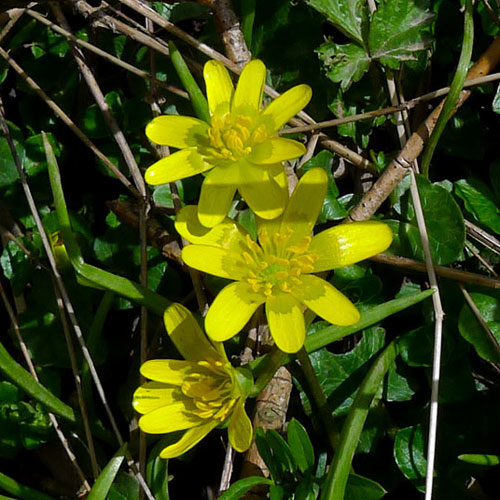 |
PORTRAITS
| Great
Crested Grebe |
Grey
Heron |
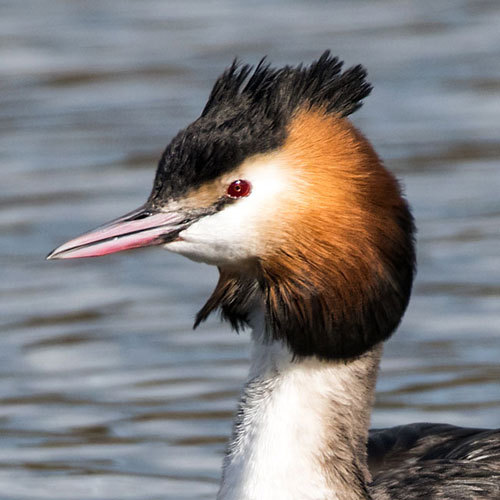 |
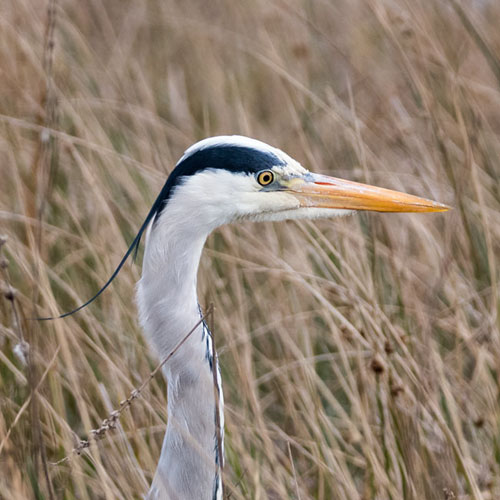 |
| Pink-footed
Goose |
Roe
Deer |
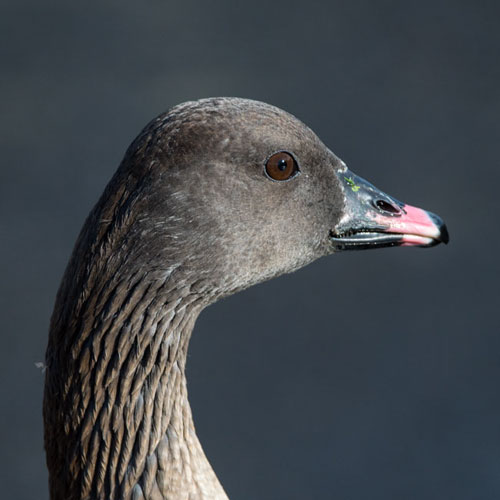 |
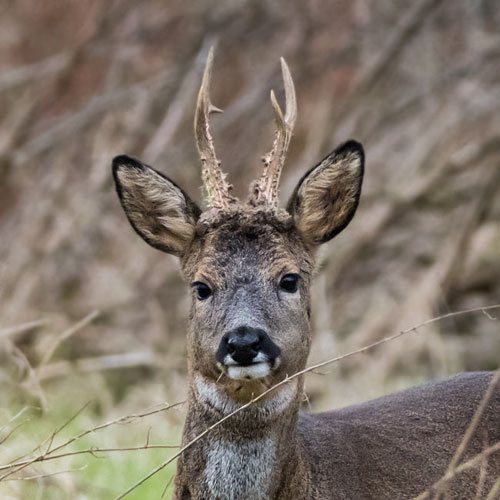 |
| Song
Thrush |
Whooper
Swan |
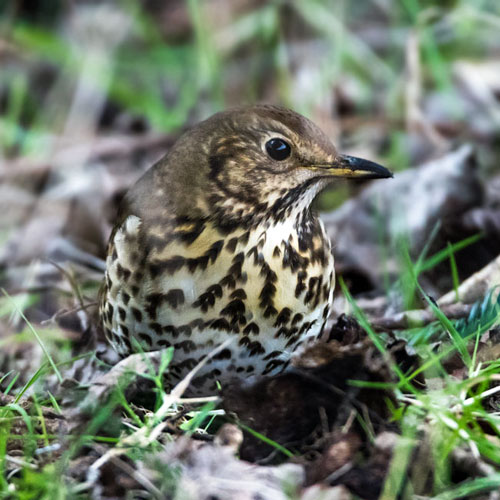 |
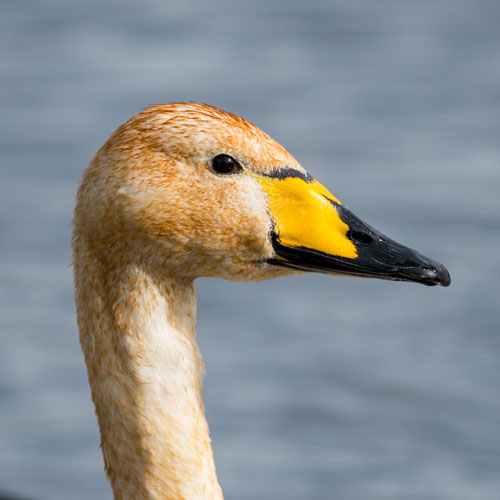 |
THEY LOVE THE WATER
| Canada
Goose |
Common
Frog |
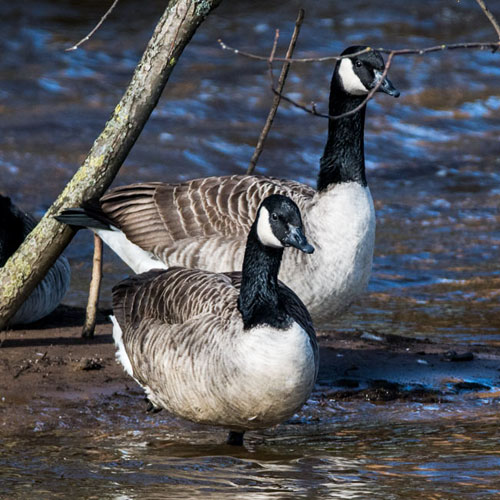 |
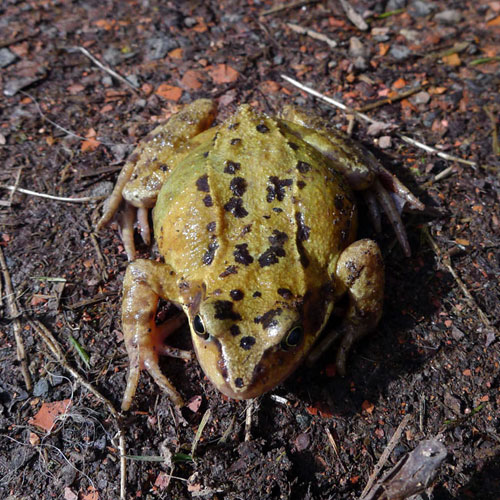 |
| Coot |
Dipper |
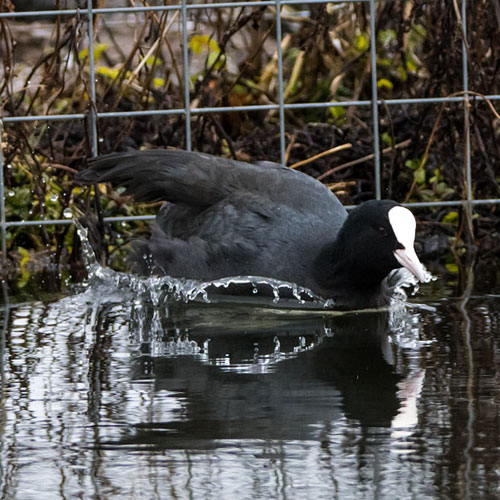 |
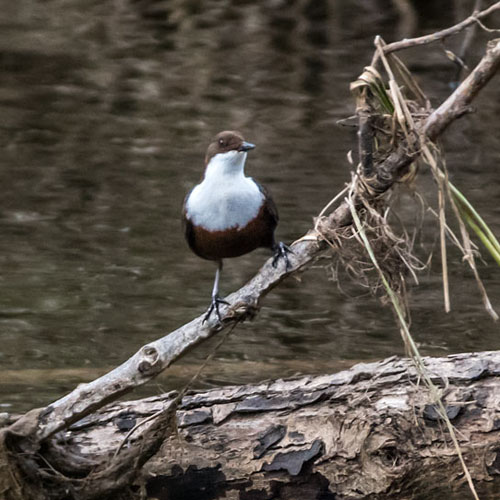 |
| Gadwall |
Goldeneye |
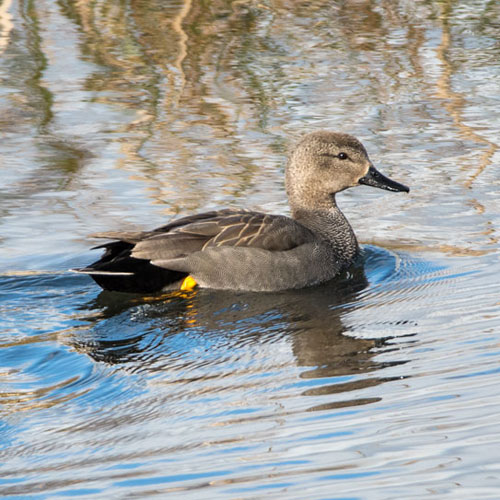 |
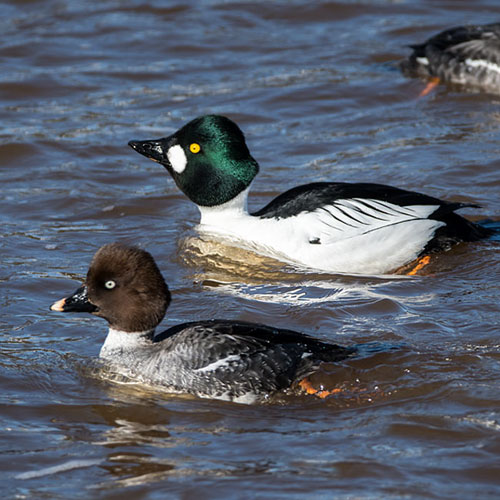 |
| Goosander |
Moorhen |
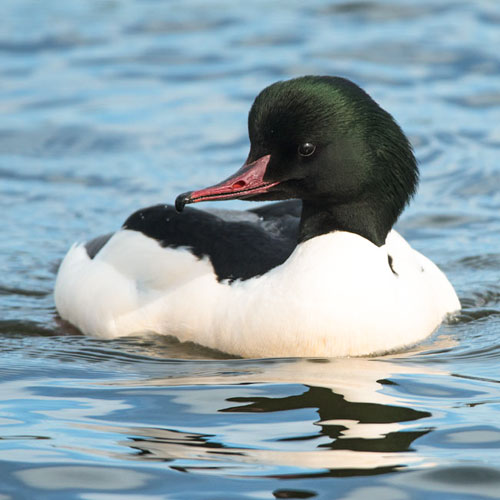 |
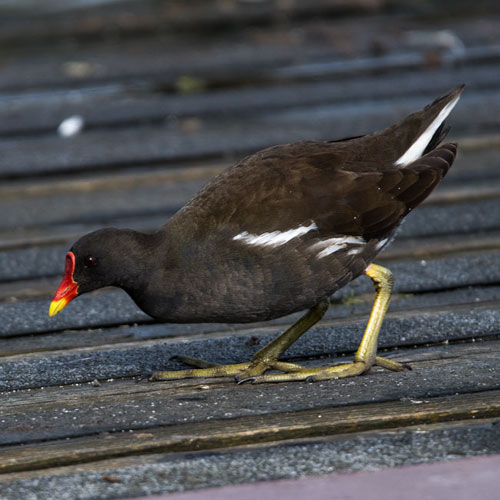 |
| Pink-footed
Goose |
Tufted
Duck |
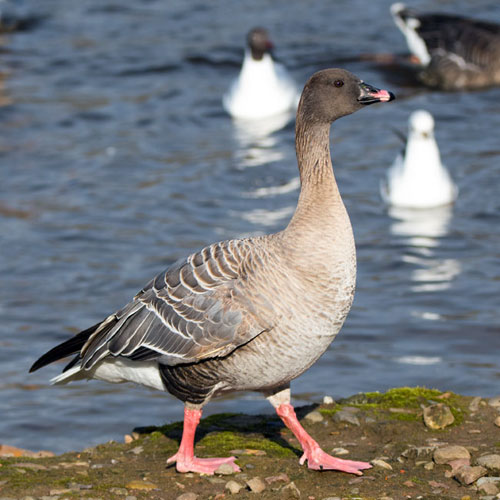 |
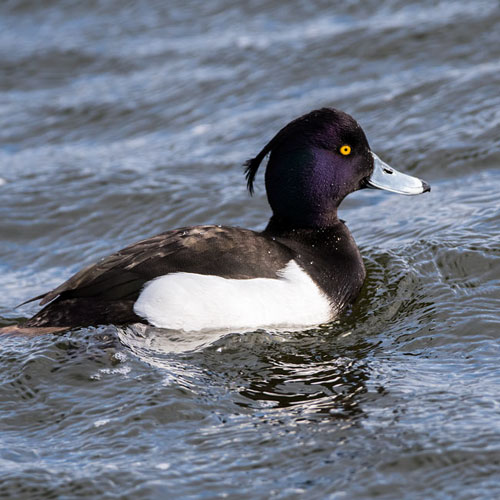 |
RAPTORS
| Buzzard |
Juvenile
Kestrel |
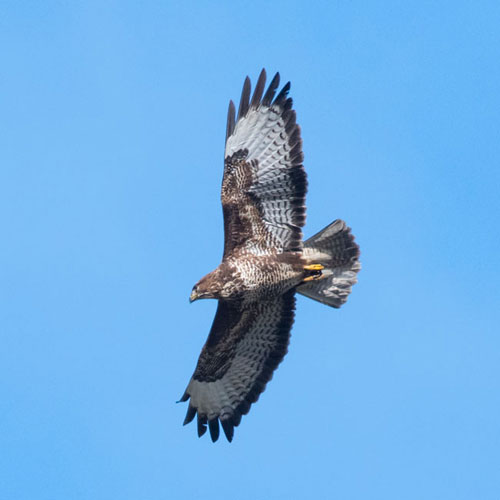 |
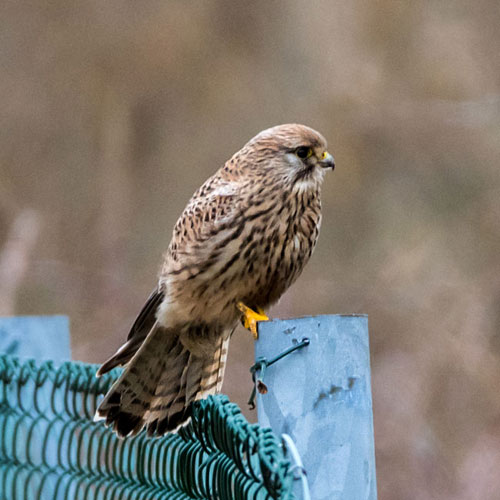 |
LOVE IS IN THE AIR
| Goldeneye |
Great Crested Grebe |
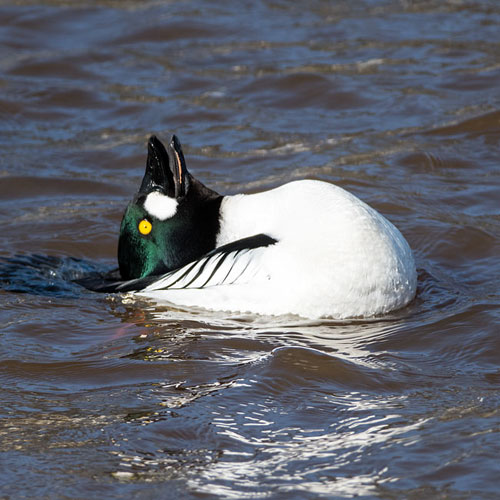 |
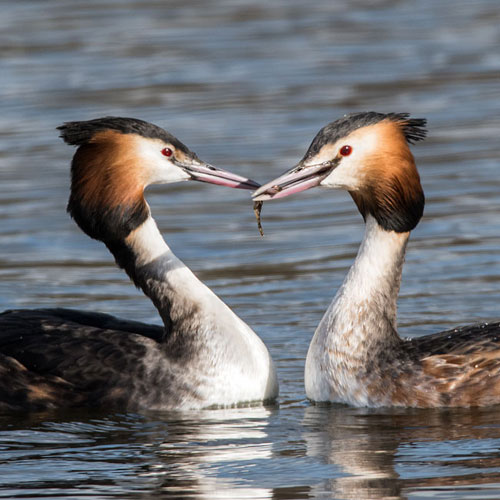 |
Back To Top
|

